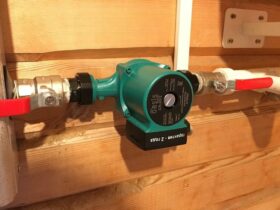Grow eggplants are grown in a seedling way. Sowing seeds is carried out from February 25 to March 10.
Before sowing, it is recommended to sort seeds. To do this, pour half a bucket of water and put 50 grams of table salt there (mix). When the salt dissolves, the seeds are poured into the water, while stirring them for 2 minutes. 5 minutes are given to settled. After that, water and pop -up seeds are drained. Those seeds that remained are washed with clean water several times (5-6) and dried.
Before sowing seeds, they need to be germinated (at a temperature of 25-28 degrees) and hardened, first at a temperature of 3-5 degrees (18 hours), then at a temperature of 15-16 degrees (6 hours).
You can disinfect seeds. To do this, they must be kept for 20 minutes in a water heated to 50 degrees.
It is best to sow seeds immediately in pots, thereby avoiding transplants. Since this plant transplants the transplant does not tolerate.
Sown seeds are watered with water at room temperature and then covered with a film. Until there are shoots, the temperature must be maintained within 22-25 degrees. If seedlings appear, pots with eggplant seeds must be put in a bright place, and the temperature is reduced (about a week). This is done so that the entrances can get stronger.
Water seedlings better with warm water. Monitor the humidity of the soil and in no case allow it to dry out.
With poor growth in seedlings, it should be fed with infusion prepared from mullein or chicken droppings. The mullein is diluted in water in a ratio of 1:10, chicken droppings – 1:15.
Before planting in the ground, in 10-12 days, seedlings must be tempered.
The most suitable soils for planting eggplant are fertile and high -fruity. They must be protected from the wind.
Eggplants need to be planted on those ridges where cucumbers, zucchini, cabbage, carrots or onions grew before them. It is undesirable to plant the same place, since viral and fungal diseases are possible. You can plant eggplants on the same bed only after 2-3 years.
It is recommended to plant eggplants in the soil only in the third year after the manure has been introduced. In the fall, the land is carried out with humus (2-6 kg. per square meter). In the spring, digging the ridge, should be added to the soil (1 square meter): 8-3 grams of potassium salt, 40-60 grams of superphosphate and 40-120 grams of ammonia nitrate. The amount of fertilizer will depend on the soil.
In the middle lane of Russia, eggplant seedlings are planted under film shelters. Deviation time – May 25 – June 10 (when warming up above +13 degrees).
Seedlings are planted either in a row (with rows – 70 centimeters), or into a ribbon (with rows 90 and 50 centimeters). Recommended distance between seedlings-25-30 centimeters. When landing, it is imperative to try to save the lump of land from the pot with the root system.
How seedlings were planted, it must immediately be watered.
Eggplant plants take root hard and constantly require care, regular watering (especially during fruiting). After the last watering during landing, as the earth dries, it should be loosened (both rows and aisles).
To increase the branch of the top of the stem, it must be pinned at an altitude of 20-25 centimeters. The properly formed plant should have 3-4 lateral processes (escape). On them, in turn, 5-6 fruits, which should be located evenly. All unnecessary ovaries and shoots should be removed.
Plant feeding is usually carried out with nitrogen fertilizers. For this, from 10 to 30 grams per 1 square meter of planted earth are introduced (depending on the quality of the soil). Top dressing must be carried out during the intensive appearance of buds, then before the main assembly of the crop, as well as during the formation of fruits on lateral shoots.















Leave a Reply
View Comments